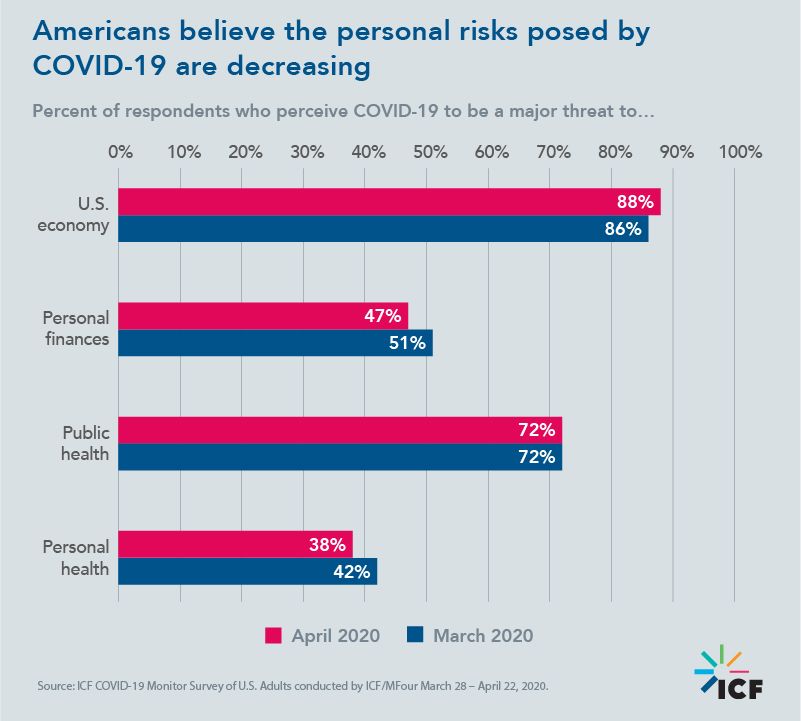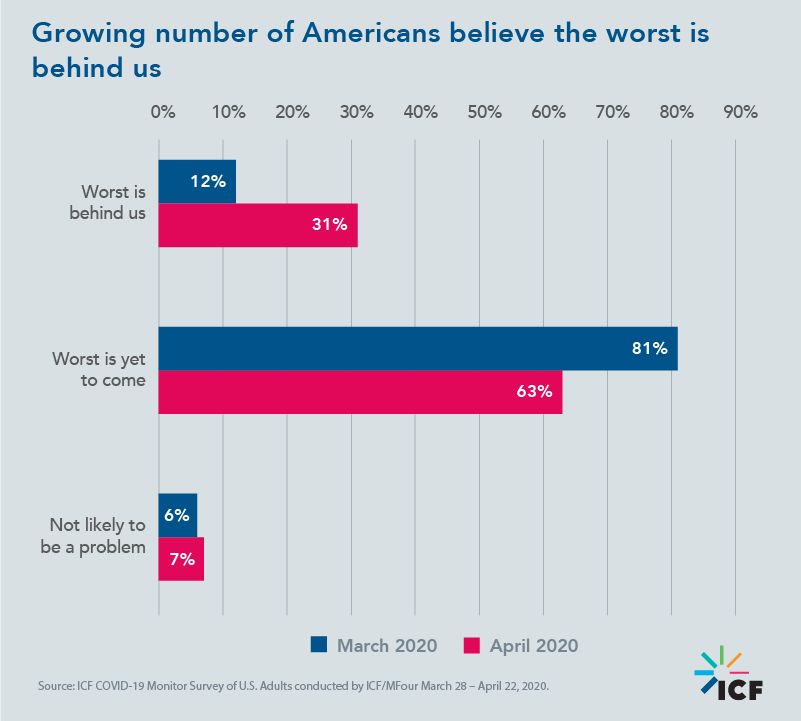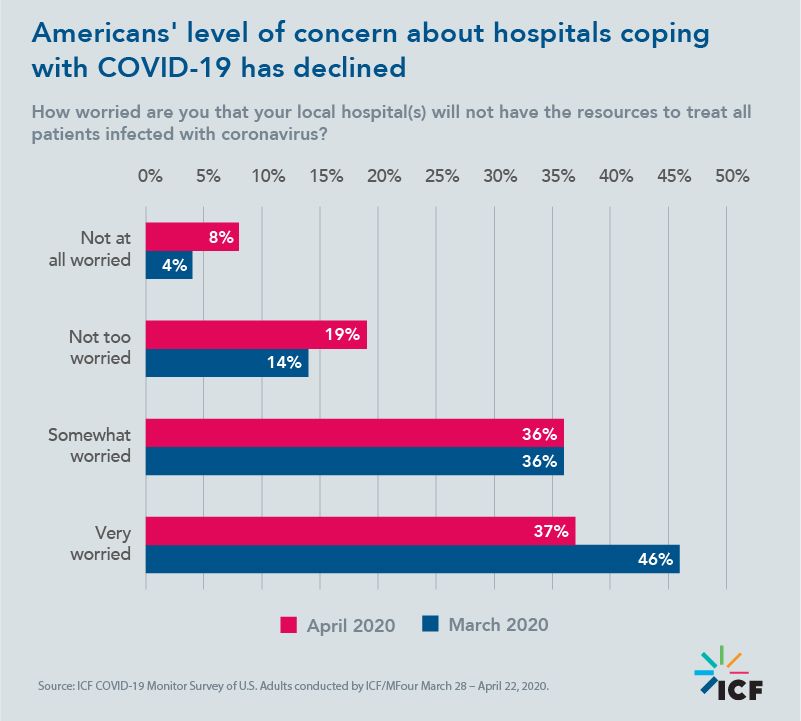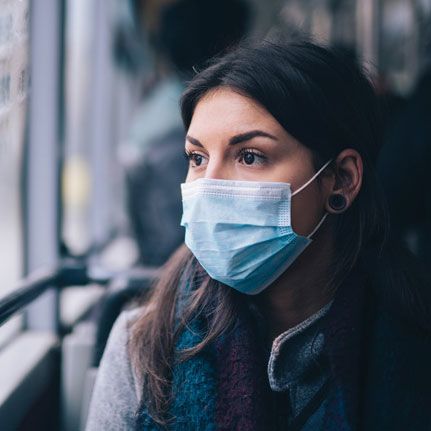Americans still see COVID-19 as a threat–but increasingly feel that the worst is behind us
Editor’s Note (5/11/2020): This article includes findings from our second wave of data collection that fielded April 14 through April 22. A second wave collected another 1,000 completes using a census-balanced, national non-probability sample. The new information, shared below, examines American perceptions on the threat of coronavirus and what’s changed since our first wave of data collection at the end of March. Learn more about the ICF COVID-19 Monitor Survey of U.S. Adults.
Americans perceive their personal risk to COVID-19 as decreasing
As of mid-April, the public continued to view the coronavirus as a major threat to the U.S. population's health and economy. However, fewer perceived the virus as a threat to themselves. Although differences are not statistically significant, the trend should be monitored as many states consider reopening non-essential businesses.

Despite an increase in the number of reported cases of COVID-19 from 25,167 to 471,167 between March 31 and April 15, and the increase in death by 28,773 during the same period, the perceived risk to personal health of COVID-19 in April, although not statistically different, decreased slightly compared to March.
A growing number of Americans believe the worst is behind us.
Although the majority of Americans in April still believed that the worst is yet to come with the coronavirus (63%), the proportion who thought the worst is behind us had increased from 12% in late March to 31% in mid-April. This difference is statistically significant.

Concerns about hospital resources also decreased
In March, almost half of our sample (46%) reported being very worried that their local hospital(s) will not have the resources to treat all patients infected with the coronavirus. In April, this dropped to 37%. Although the majority of Americans are still at least somewhat concerned about their hospital’s ability to cope with the coronavirus in the April survey, the level of heightened concern has declined, and the differences are large enough to be statistically significant.

Statistical significance testing
All analyses were conducted with SPSS Statistics 22 and SAS version 9.4. We have used χ2 tests to indicate that the association between samples/subsamples and specific variables in these surveys would be large enough to be statistically significant in a probability sample. This is not a probability sample, so the underlying distribution of the population may or may not satisfy the assumptions of the statistical model—however, χ2 tests of association are commonly used with nonprobability samples. We provide the test as a decision tool for readers in evaluating which differences are likely to be important.
Watch this space
How will public perception change as the pandemic continues? How will public health be impacted by the reopening of non-essential businesses in some states? We will continue to share key findings from our data collection efforts over the coming weeks and encourage public health officials to bear this information in mind as you shape your response to COVID-19. Sign up to receive alerts as we roll out upcoming results and package our insights into reports.
Read other insights in the ICF COVID-19 Monitor Survey of U.S. Adults series.
